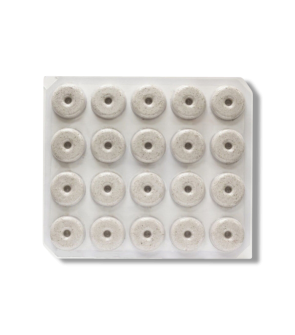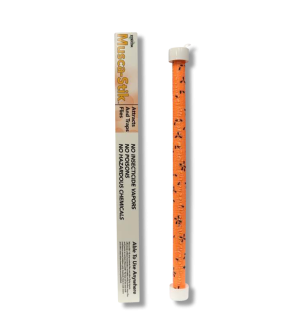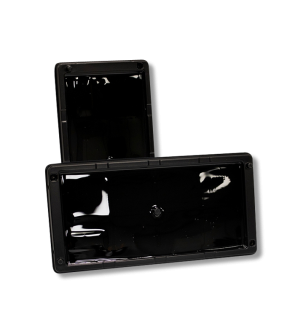Common Flood Pests
Most Effective Products
Common Flood Pests: How to Control Pests After a Flood
This page is a general DIY article that explains common types of pests that invade homes after floods. Using the products and methods suggested will help you get control of flood type pests. Follow this DIY guide and use the recommended products and we guarantee 100% control of flood pests.
Weather patterns from hurricanes and periods of excessive rainfall creates any stress on homeowners. One effect from this consistent moisture that many homeowners do not predict is pests. Common types of pests after flooding is fire ants, mosquitoes, cockroaches, wasp, and flies.
The reason that most of these listed pests invade homes after and sometime prior to flooding is to escape the outdoor conditions. When it rains these pests homes may become destroyed and they will seek a stable, warm environment for their new homes. Unfortunately, these factors they search for can be found in the inside of homes with the abundance of food, warmth, and elevated dry land.
There are many ways to prevent pests from invading before and after a flood. While these methods may seem like common sense such as cleaning it is still beneficial to learn this information. Read on to learn more about these pests and how to prevent and eliminate flood type pests through the following methods and products.
Reduce Moisture in Home

One of the first things to do after floods is to cleaning the inside and outside of your home from leaf and trash debris. Dry and wash all personal objects touched by moisture to prevent mold and eliminate damp conditions. Since various insects are attracted to water or wet conditions you will want to use dehumidifiers that can easily remove moisture from small to large voids.
You may also leave a fan on in rooms with wet environments to help dry it out. Combining both of these products will help to ensure that rooms and ventilation pipes do not contain any water.
As these areas dry it may attract pests like flies which will rest on moist surfaces. If flies are still remaining around the property after areas have become dry you may use Musca-Stik to remove them. This product will attract the remaining flies to the trap which they will then become stuck to the inescapable glue.
Cover Any Openings

Storms, floods, and hurricanes can create minor to major structural damages such as cracks and voids in windows, doors, roofs, and walls. Pests such as cockroaches can easily find their way into homes through plumbing and small crevices. Considering how easily insects can invade a home these holes created by flood activities makes it even easier for insects to enter homes.
Repair these small to large voids such as broken windows to prevent insects from coming inside. Until these areas can be repaired you will need to use plywood to cover these openings otherwise you risk insects crawling inside home. If insects do enter your home you may use Solutions Professional Rat and Mouse Glue Tray. Place these large and durable glue traps along the edges of walls, baseboards, and underneath sinks and kitchen appliances. Replace every 3 days or as needed to keep capturing insect and rodent pest.
Remove Waterlogged Debris

As any homeowner may experience a flood or high winds associated with storms makes excessive piles of wood, leaf, and other homes foundation debris. Its important to remove these conditions from the inside and outside of your home as these materials are attractants for insect pest.
Any water-soaked materials provides pests with an abundance of water and habit for homes. Large items that cannot be easily removed such as fallen trees will need to be shredded and removed from your yard.
Treat Standing Water Sources

Eliminate any standing water such as in tires, outdoor garden tools like wheelbarrows, and birdbaths. Other locations that cannot easily be dried or removed like bodies of water in yard should be treated with a larvicide.
We recommend using BTI Mosquito Dunks, which is a biodegradable floating larvicide that will dissolve in water. The application rate for BTI Mosquito Dunk is 1 dunk per 100 sq. ft. of water surface. This product will work to eliminate mosquito and fly larvae within 48 hours of application.
Repair and Replace

The smallest amount of moisture can lead to various mold and fungi infestations. Another concern with this moisture is that it leads to breakage and cracks in the wall, which allows pests to enter homes more easily.
For this reason, make sure that all drywall surfaces and plumbing leakage is repaired. Of course, you will need to use caulk to treat cracks and small voids in cracks in the wall and around pipes.
Apply Insecticidal Barriers

Once these home improvements have been made you will need to further ensure that insects are not further enticed to invade. This can be prevented by applying a long-lasting insectidal product along the exterior perimeter of the home. We suggest using Supreme IT, which is an easy to use liquid insecticide that treats over 70 pests for up to 3 months.
The application rate for general pest infestations is 1 oz. of Supreme IT per gallon of water per 1,000 sq. ft. You will need to use either a handheld pump sprayer or backpack sprayer. In your selected sprayer, pour half the amount of water, add the measured amount of Reclaim IT, and then add the remaining half of water. Close the sprayer lid and shake to ensure agitation. Spray the top and bottom of foliage leaves until wet, but not to the point of run-off. Spray the exterior surface of home to a maximum height of 3 feet from the ground level and up to 6 or 10 feet wide around the homes structure.
Key Takeaways
What are Common Flood Pests?
- Most common pests that invade homes before and after floods are fire ants, mosquitoes, cockroaches, wasp, and flies.
Can Pest Survive Flood Waters
- Depending on the amount of exposure your home provides pests can survive flood waters due to the amount of dryness in home and elevation.
What is the First Thing To Do After Flood
- The first thing to do after floods and storms is to dry out the inside of homes by using a fan or dehumidier. Any remaining amount of moisture can attract pest and create mold or fungi infestations.














































































































































































































































































































































































































































































































































